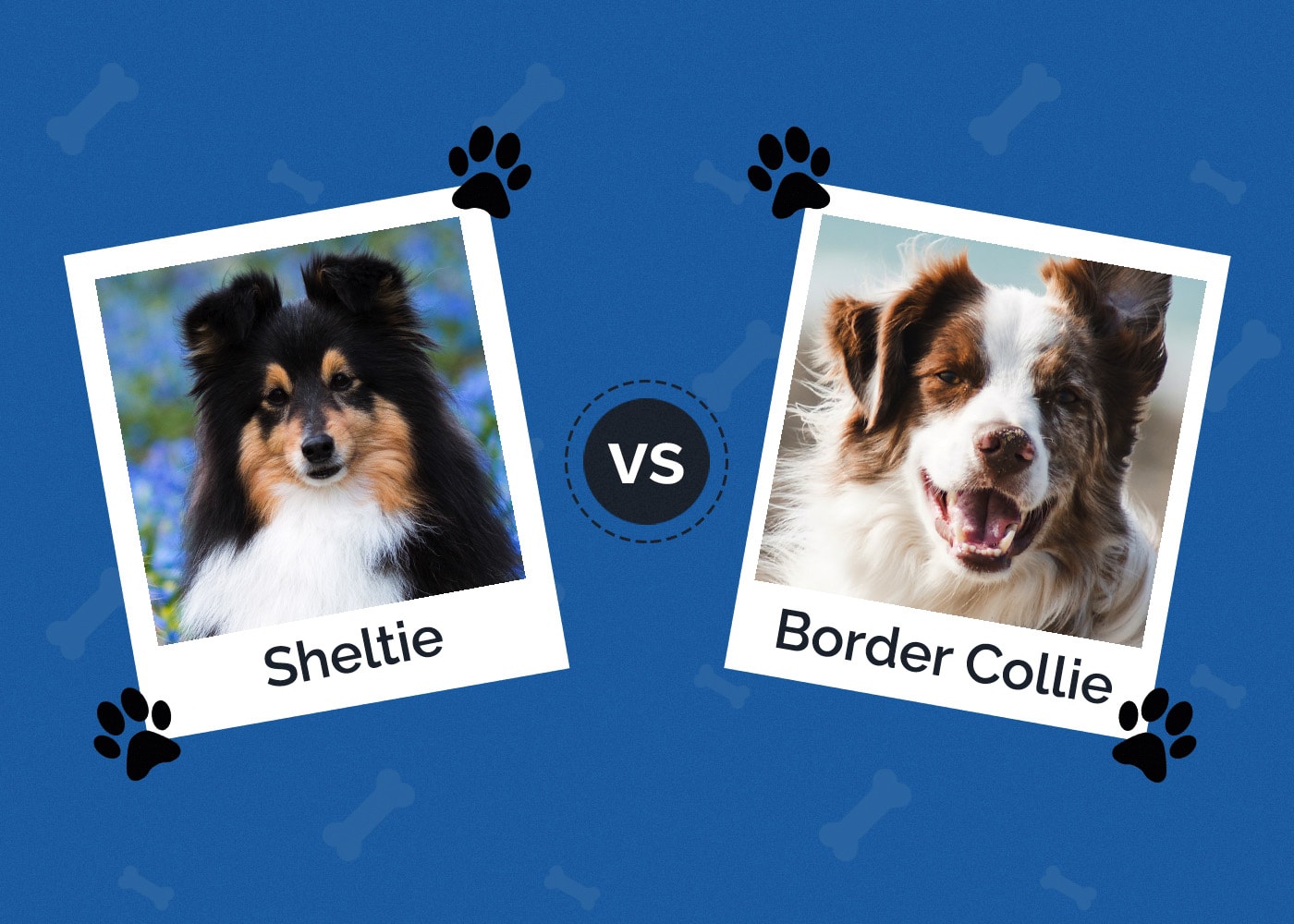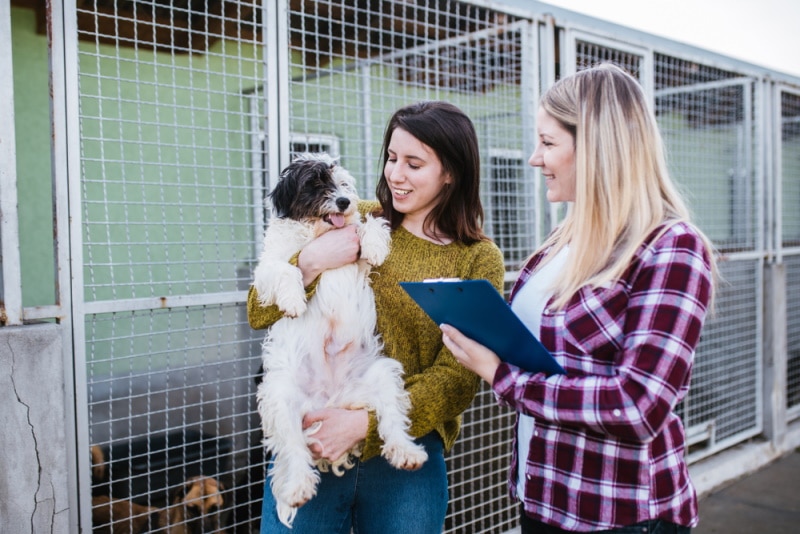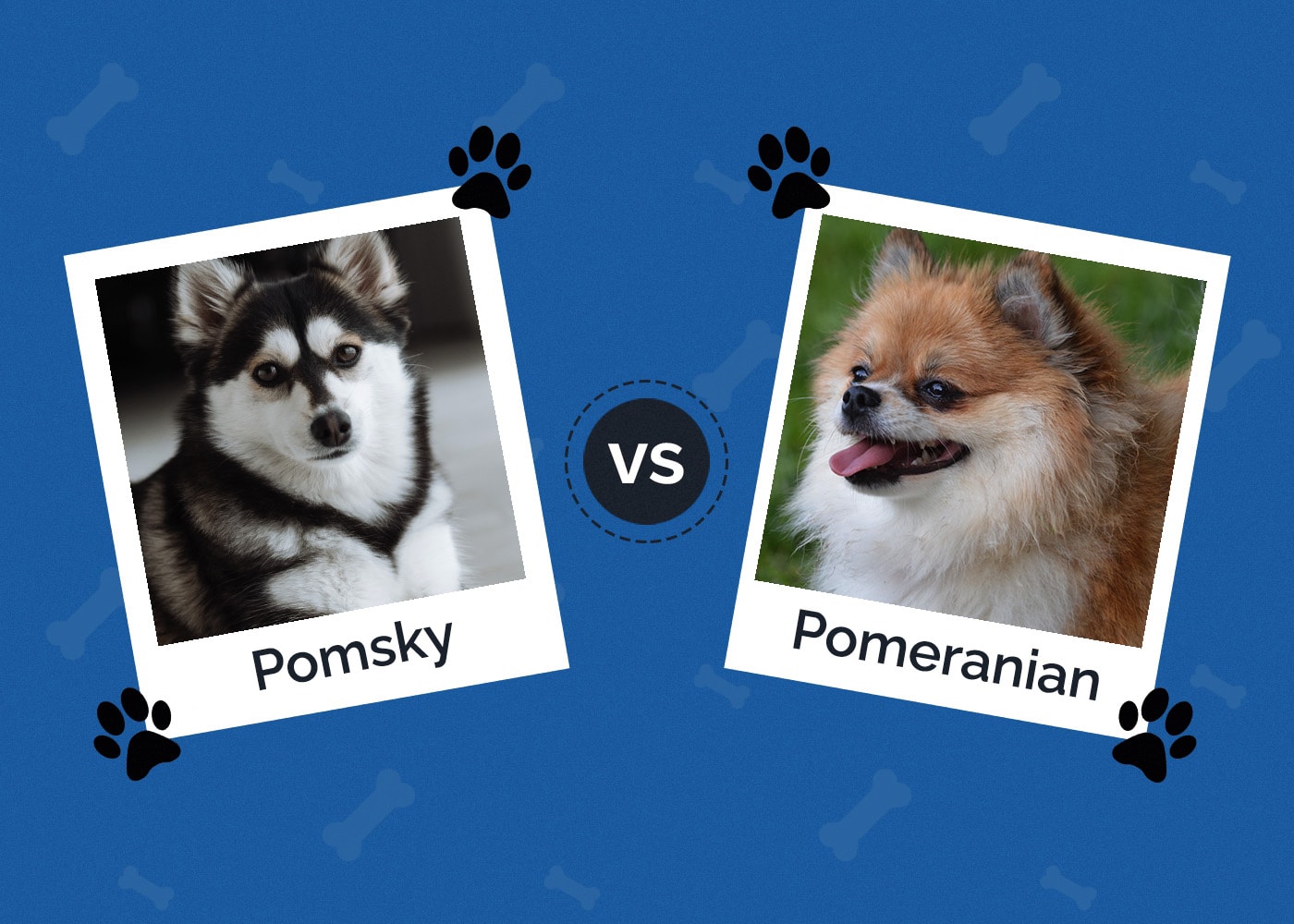How to Stop a Dog From Chasing Cats: 5 Tips & Tricks

Updated on
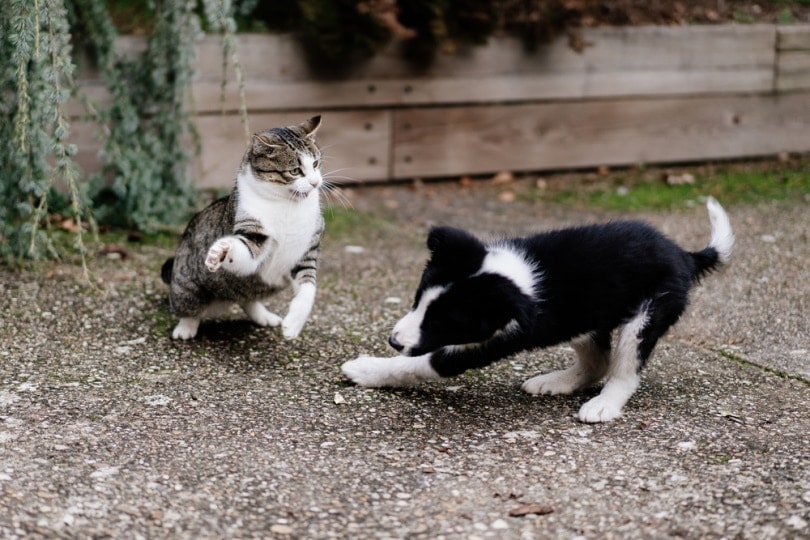
Click to Skip Ahead
Many dogs and cats live in harmony in homes nationwide, but sometimes, a cat can encourage a dog’s natural chasing instincts. While this can start playful, it’s stressful for your cat and can escalate to more harmful behaviors, including a dog injuring or killing a cat.
Find out five tips and tricks to stop a dog from chasing cats.
Why Do Dogs Chase Cats?
Dogs descended from wolves, which are natural hunters. Many dogs have an instinct to chase and hunt, especially breeds that have been selectively bred over time to hunt like hounds and retrievers. Herding dogs also have an instinct to chase and herd cats like they would sheep or cattle.
In addition, cats are probably fun to chase. Cats move quickly (like many prey animals) and can trigger the prey drive in dogs. They chase cats like they would a ball or a squirrel.
However, no matter how fun it is for your dog, it’s important to curb chasing behavior. Even if it stays as a chase, this is not a fun experience for your cat. It’s stressful and scary. Worse yet, your dog can escalate more and more, eventually catching and hurting your cat—whether intentionally or not.

How to Teach Your Dog Impulse Control
It’s important to teach your dog impulse control for many reasons, including discouraging a chase.
- First, confine your cat to a crate.
- Your dog is likely to be interested in your cat, so every time they approach the cat, redirect your dog’s attention to you.
- Every time your dog looks at you instead of the cat, reward them with a treat or praise.
- Keep working on getting your dog’s attention until it’s automatic and your dog is paying more attention to you than the cat.
- You can try releasing the cat and repeating the same process every time your dog looks at or approaches your cat, bringing them to you and rewarding them.
- If your dog struggles to stay focused on you when the cat is free, put the cat back in the crate and start over. You may need a leash to keep your dog’s attention in the initial stages.
The 5 Tips and Tricks to Discourage Your Dog From Chasing Your Cat
1. Don’t Use Punishment or Aversive Methods
Physical punishment or aversive training methods like spray deterrents, choke or pinch collars, or shock collars should never be used. This only teaches your dog to be fearful, which could cause redirected aggression toward you or your cat. Always use positive reinforcement and high-value treats and toys that are more interesting to your dog than your cat.
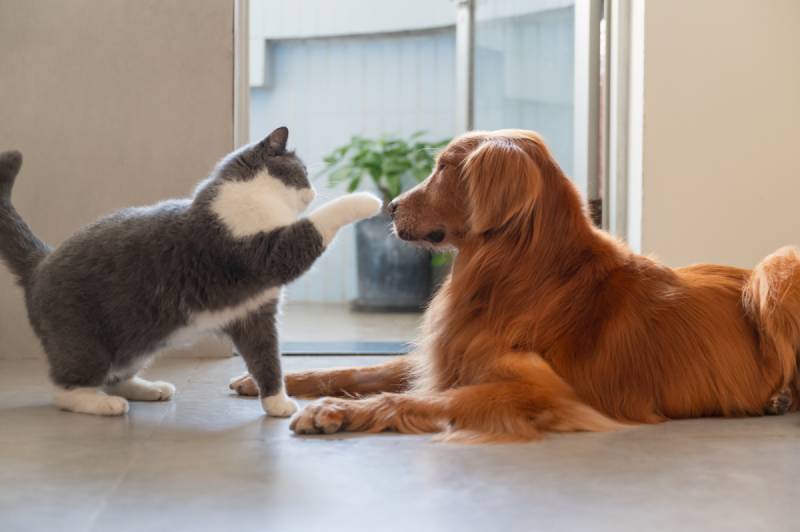
2. Give Your Dog Other Outlets
In addition to training your dog to avoid chasing your cat, you need to provide enrichment and exercise to tire your dog out. Work on obedience and trick training, offer brisk walks, and take your dog places to run off leash or on a long lead to relieve pent-up energy.
Depending on your dog’s preferences, you can also try puzzle toys, games of fetch, and chew toys or lick mats to give your dog enrichment. Some dogs are extremely high energy and need a “job” to do, like a German Shepherd or Border Collie, and benefit from canine sports like agility, scent work, or rally.
3. Be Patient
Training takes time, especially if you’re working with an older dog that suddenly developed these behaviors. You’re not going to correct the behavior in one session. Instead, focus on short, positive sessions with small wins, increasing the challenge each time. You don’t want to burn out yourself or your dog by overdoing your training.

4. Give Your Cat a Break
Training may take a while before your dog stops chasing your cat. In the meantime, you should keep them separated. This is not only a break for your cat but also prevents training setbacks as your dog falls into the same patterns.
5. Check Medical Reasons
If chasing is sudden, schedule an appointment with your vet. Some medical conditions can cause behavioral changes in your dog, so it’s best to rule out any possible medical causes before moving forward with training.

Conclusion
Your dog chasing your cat can be a concerning behavior and a major disruption in your home. Whether you have a puppy chasing a flighty cat or your adult dog has suddenly started tormenting your cat, it’s important to curb the behavior early. These tips and training methods can help you restore harmony between your dogs and cats in your home.
Featured Image Credit: asife, Shutterstock

